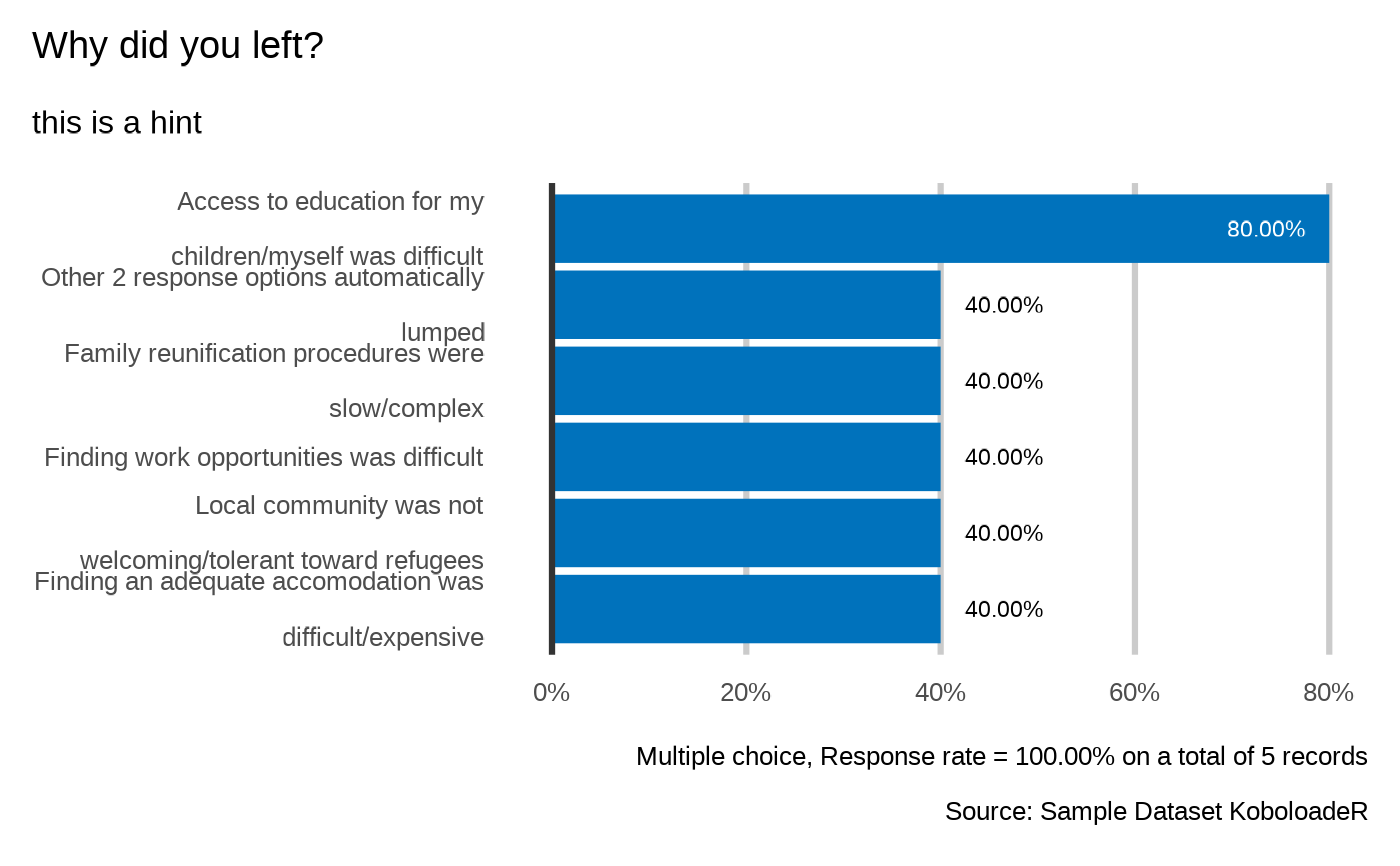Note that if the column order is set in the xlsform choice part, the variable will be de factor considered as ordinal and the default ordering will not be done based on frequency
Usage
plot_select_multiple(
datalist = datalist,
dico = dico,
var,
datasource = NULL,
n = NULL,
showcode = FALSE
)Arguments
- datalist
An object of the "datalist" class as defined in kobocruncher
- dico
An object of the "kobodico" class format as defined in kobocruncher
- var
name of the variable to display
- datasource
name of the data source to display, if set to NULL - then pulls the form_title within the settings of the xlsform
- n
if not NULL, lumps all levels except for the n most frequent (or least frequent if n < 0) - cf forcats::fct_lump_n()
- showcode
display the code
Examples
dico <- kobo_dico( xlsformpath = system.file("sample_xlsform.xlsx", package = "kobocruncher") )
datalist <- kobo_data(datapath = system.file("data.xlsx", package = "kobocruncher") )
plot_select_multiple(datalist = datalist,
dico = dico,
var = "profile.reason",
datasource = NULL,
showcode = TRUE
)
#> Why did you left?
#> `plot_select_multiple(datalist, dico, "profile.reason", datasource=params$datasource, n=7)`
#>
#>
 ## Displaying the usage of the lumping option..
plot_select_multiple(datalist = datalist,
dico = dico,
var = "profile.reason",
n = 5,
datasource = NULL,
showcode = TRUE
)
#> Why did you left?
#> `plot_select_multiple(datalist, dico, "profile.reason", datasource=params$datasource, n=5)`
#>
#>
## Displaying the usage of the lumping option..
plot_select_multiple(datalist = datalist,
dico = dico,
var = "profile.reason",
n = 5,
datasource = NULL,
showcode = TRUE
)
#> Why did you left?
#> `plot_select_multiple(datalist, dico, "profile.reason", datasource=params$datasource, n=5)`
#>
#>
 # plot_select_multiple(datalist = datalist,
# dico = dico,
# var = "profile.reason1",
# showcode = TRUE
# )
# plot_select_multiple(datalist = datalist,
# dico = dico,
# var = "profile.reason1",
# showcode = TRUE
# )
